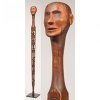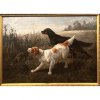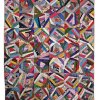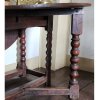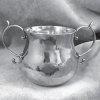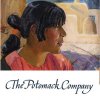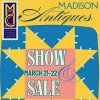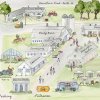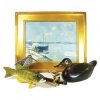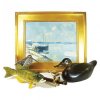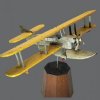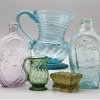The 2019 Delaware Show
November 7th, 2019
Delaware Antiques Show, Wilmington, Delaware
There is no question that the Delaware Antiques Show is one of the very best for Americana. Collectors come from all parts of the country knowing that a large contingent of dealers in American furniture, textiles, silver, folk art, ceramics, pewter, and silver made or used in America will be there along with those dealing in Continental brass and iron and Asian porcelain with international appeal. Dealers say it is the most engaged audience of any show. Collectors look carefully and ask questions and learn from the experts. They did some buying.
Dealers said they thought the opening night crowd on Thursday, November 7, 2019, was thinner than usual and more social than shopping, though a few things were sold. Friday and Saturday were very crowded with serious buyers, and some came back on Sunday and found plenty left to buy.
There was a selection of painted chests. Several pieces of furniture seen in the New York and Philadelphia shows sold in Delaware. Some were still available. Kelly Kinzle sold a diminutive paint-decorated chest from Lehigh County at the preview and could have sold it twice. On Saturday Christopher Jones sold a chest decorated by the Shenandoah Valley painter Johannes Spitler that last appeared at a show in New York in 1984.

Kelly Kinzle of New Oxford, Pennsylvania, offered for $35,000 this Wythe County, Virginia, dower chest attributed to Johannes Hudel/John Huddle (1772-1839). It is from a group of Wythe County blanket chests published by J. Roderick Moore in The Magazine Antiques in September 1982 (p. 516). The chest is dated 1828 twice on the back. Kinzle said these chests were influenced by the work of Johannes Rank (1763-1828) of Jonestown, Pennsylvania. This chest is in remarkably good condition; there is some inpainting on the feet.
Jones also sold a Philadelphia maple side chair that survived with its original leather-covered slip seat, possibly from the shop of Solomon Fussell (1704-1762). Several other Philadelphia chairs sold. James Kilvington sold a tall-back cane-seated walnut side chair, 1690-1710, with turnings similar to Philadelphia ladder-back rush-seated side chairs. Similar chairs are in museum collections and illustrated in Joe Kindig’s catalog of Philadelphia chairs and in the catalog for Worldly Goods, a 1999 exhibition at the Philadelphia Museum of Art. Philip Bradley sold a low-back Windsor chair signed by Gilpin. Christopher Rebollo sold a pair of Philadelphia Chippendale side chairs. Elliott and Grace Snyder sold a New England ladder-back chair with arms that end in dish-shaped turnings that would hold a teacup and saucer.

Christopher Rebollo of North Wales, Pennsylvania, sold the pair of Philadelphia side chairs, 1765-80, with a rare splat design and earlier style acanthus leaf knee carving, from the Pepper family. The splat design appears in chairs from the Deshler family in the Germantown White House.
Tables sold too. Frank Levy sold a Philadelphia card table with carving by Martin Jugiez. Peter Eaton sold a diminutive Rhode Island card table, and Taylor Thistlethwaite sold a diminutive one-drawer table from the Shenandoah Valley. Jim Kilvington sold a diminutive George II oak dressing table, circa 1730, with very slender legs and pad feet. Olde Hope and Jeffrey Tillou each sold a large painted farm table.
Kelly Kinzle and James Price each sold a tall-case clock. Yes, there is a market for American furniture, especially when fresh.
There is also a market for schoolgirl needlework. Amy Finkel sold more than a dozen samplers, and Stephen and Carol Huber made more than half a dozen sales. They sold a rare 1811 drawing book by Ann Dearborn, a student at Clifton Hill Academy, Dorchester, Massachusetts, a boarding and day school for girls run by Judith Foster Saunders and Clementina Beach. Winterthur has samplers made by students at this school.
The American silver market was active. Jonathan Trace made multiple sales of bowls and spoons, and Colonial Williamsburg is considering acquiring his large New York coffeepot. Spencer Marks made a dozen sales of 19th- and 20th-century silver, made by Gorham, Tiffany, and other makers of Arts and Crafts, Aesthetic Movement, and modern American silver. Spencer Marks’s sales included a Gorham tea service, flatware, bowls, and candlesticks.
Folk art sold. Colette Donovan said she had a good show, selling early New England furnishings and a portrait. Joan Brownstein sold several miniature watercolor portraits and several full-size portraits, and Elle Shushan had red dots on half a dozen miniatures and spaces on her wall where others had hung.
Many collectors carrying more than one bag were seen walking out of the show. Marcy Burns said she sold American Indian baskets, pottery, and beadwork. Martyn Edgell, who comes from the U.K. with a full range of English pottery, said he had an extremely good show. Polly Latham sold nearly all the China trade porcelain made for the American market she brought to the show along with some Chinese porcelain made for the European trade. Barbara Israel sold stone ornaments for the garden—a turtle and a crocodile sold early in the show.

This Plains Indian beaded pipe bag with miniature pipes on the pouch and American flags, 1890s, in excellent condition, was $5800 from Marcy Burns American Indian Arts, New York City. The dealer said she had a good show selling pottery and baskets.
Dealers who made few sales said they expect to hear from people who took pictures and notes and went home to measure and think about a purchase. The booth rent for this show is reasonable compared with other shows. Dealers can stay at the Westin that adjoins the Chase Center in the industrial park or at other motels nearby. The Chase Center, just off I-95, is convenient for those driving and just a short cab ride from the Amtrak station in Wilmington for those who come by train.
Moreover, the show comes at the right time of the year. November is the beginning of holiday shopping. The fact that there is no sales tax in Delaware is another bonus. Dealers with websites said before the show they sent e-mail blasts to clients who then reserved what they hoped to buy. Some clients went to the show to have a look and be sure and then bought, and others bought long distance. Others said they sold from their show ads before they went to Delaware.
The show benefits educational programs at the Winterthur Museum, proselytizer of good taste in Americana, the legacy of Henry Francis du Pont, who had an unerring eye.
As part of the educational program for this 56th Delaware Antiques show, Irish design and influence on design in America was explored. Robert  O’Byrne’s lecture on Irish country houses on Friday at 10 a.m. was well received. The loan exhibition, Irresistibly Irish: Decorative Arts from the Winterthur Collection, greeted visitors as they entered the show. A gold buckle reminded visitors that Philadelphia silversmith Philip Syng was Irish. The 12-light silver chandelier that hangs in Winterthur’s Readbourne Parlor was in a special case. It was probably made by Mark Fallon of Galway, Ireland. The elaborately carved tea table from the same parlor has a history of ownership in Graeme Park in Horsham, Pennsylvania, the estate of Scottish-born doctor Thomas Graeme (1688-1772). The label called the table either Irish or from Philadelphia and suggested that Graeme used it at his Philadelphia townhouse. Dealers and scholars at the show said it is a Philadelphia table, not Irish. New York City dealer Frank Levy, who was a Winterthur Fellow, called it one of the masterpieces of Philadelphia furniture. Alan Miller said it is an early Philadelphia table made in the late 1740s, with carving by the hand of someone who worked on Independence Hall. He wonders if the top is original and thinks it might once have had a marble top, but he said he has never examined it with the top off to prove his hunch.
O’Byrne’s lecture on Irish country houses on Friday at 10 a.m. was well received. The loan exhibition, Irresistibly Irish: Decorative Arts from the Winterthur Collection, greeted visitors as they entered the show. A gold buckle reminded visitors that Philadelphia silversmith Philip Syng was Irish. The 12-light silver chandelier that hangs in Winterthur’s Readbourne Parlor was in a special case. It was probably made by Mark Fallon of Galway, Ireland. The elaborately carved tea table from the same parlor has a history of ownership in Graeme Park in Horsham, Pennsylvania, the estate of Scottish-born doctor Thomas Graeme (1688-1772). The label called the table either Irish or from Philadelphia and suggested that Graeme used it at his Philadelphia townhouse. Dealers and scholars at the show said it is a Philadelphia table, not Irish. New York City dealer Frank Levy, who was a Winterthur Fellow, called it one of the masterpieces of Philadelphia furniture. Alan Miller said it is an early Philadelphia table made in the late 1740s, with carving by the hand of someone who worked on Independence Hall. He wonders if the top is original and thinks it might once have had a marble top, but he said he has never examined it with the top off to prove his hunch.
Discussions about attributions are one of the sports of this show. “Was the dressing table in Frank Levy’s booth made in Long Island or New Jersey?” was one overheard discussion. “What is the origin of the hocked leg on the tea table that Sumpter Priddy offered?”
Of the hundreds of “smalls,” as the trade calls them, very few are illustrated. It takes several trips and great stamina to see them all, but the quality stands out.
This show has a formula for success. Good advertising, events that bring Winterthur alumnae and major Winterthur donors to the show, and a long history in the same venue work in its favor. Collectors look forward to this annual fall conclave where they discuss new information and acquisitions with old friends.
For more information, call 1-800-448-3883 or see the website (www.winterthur.org/das).

Hilary and Paulette Nolan of Falmouth, Massachusetts, asked $12,500 for this circa 1800 Pennsylvania Dutch cupboard with lollipop cutouts and an old dry surface. The banister-back chair with crisp turnings and original black paint was made in New York circa 1750 and was $2800.

Polly Latham, a Boston dealer in Chinese export porcelain, sold all four of these pots de crème from Thomas Jefferson’s dinner service. Each is monogrammed with a “J” within a gilded sunburst design. It is said that the service was ordered by Governor and Mrs. Christopher Gore of Massachusetts for Jefferson while the couple were in London on a diplomatic mission, as they ordered a similar service with a “G” for themselves at the same time. The service was acquired by a descendant of Jefferson at the bankruptcy sale after his death. The pots de crème and other pieces came to market at a Christie’s sale in January 2013.

Greg K. Kramer of Robesonia, Pennsylvania, said this rare 1840s-50s paint-decorated Dutch cupboard is the best one he has ever owned. Attributed to John Leiby of Berks County, Pennsylvania, in salmon and red paint with yellow trim, it is one of three examples known, and is the smallest. It was $195,000. Kramer sold a lot of wall decorations and smalls, including redware and stoneware.

This early painted chest by Johannes Spitler (1774-1837), Shenandoah (now Page) County, Virginia, yellow pine, 24" tall x 50" wide x 23" deep, is one of 24 pieces of furniture decorated by Spitler, including 21 painted chests. This is an early example of Spitler’s red, blue, black, and white abstract design. Christopher H. Jones of Alexandria, Virginia, wanted $39,000 for the chest. It was sold in the fall of 1984 by Atlanta dealer Deanne Levison at the Pier Show in New York City and recently came back on the market from the family of the collector. Elizabeth A. Davison, author of a forthcoming book on Spitler, to be published in 2021, came to the show. She first examined the chest on Nantucket and said that one of the turned feet is original and it is an unusual early design for this maker. Davison noted that Spitler was the decorator and that several different cabinetmakers made the chests he painted. The chest sold to mid-Atlantic collectors.

Chippendale tall-case clock, the case labeled by James McDowell, Duck Creek (now Smyrna), Delaware, with works attributed to Richard Miller, 1793-1805, in a mahogany case, 96½" high x 19¾" wide x 16¼" deep. It is illustrated in Delaware Clocks by Philip D. Zimmerman, who wrote that Miller made a hasty retreat from New Jersey to escape prosecution as a Tory and was reluctant to sign his clocks after the hostilities. The price on the wall label was $100,000 from Frank Levy of Bernard and S. Dean Levy, New York City.

James and Nancy Glazer of Bailey Island, Maine, asked $25,000 for this carved secretary, circa 1880, signed “I Weber, Meadville, PA,” 7' high x 42½" wide x 22" deep. The artisan is listed as a shoemaker in Meadville.

Peter H. Eaton of Wiscasset, Maine, offered this Queen Anne high chest with five drawers on the top and three drawers on the base, a deeply scrolled skirt, and very tall cabriole legs with large pad feet. It’s made of maple and birch. Eaton said it was made on the North Shore of Massachusetts, 1745-55. The waist molding is restored, and proper cotter pin brasses have been reset in original holes. The top case is 34¼" wide, and the lower case is 36¾". It was purchased from a local family, and the price was $5500. Eaton sold a Rhode Island card table (not shown) of unusual small size with a serpentine top and blocked ends.

This prisoner-of-war bone ship model in its original straw-work case is of a desirable small size (12¼" x 10¼" x 6¼") and has a reflecting glass. The man-of-war has 24 gun ports with brass guns; the figurehead is a Roman soldier. It was $16,500 from Diana Bittel of Bryn Mawr, Pennsylvania, and it sold at the preview.

The portraits of George Alexander Kennedy Sr. and Eleanor Scott Kennedy with George Alexander Kennedy Jr., circa 1800, oil on canvas, 36" x 27½", are by Charles Peale Polk (1767-1822). The son of Elizabeth D. Peale and Robert Polk, Charles Polk went after the death of his mother to live with his uncle Charles Willson Peale, from whom he received his artistic training. From 1791 to 1796, he lived in Baltimore, where he went into the dry goods business but failed. He continued to paint, however. The pair of portraits was $60,000 from Schwarz Gallery, Philadelphia.

Clock collector and author Bob Frishman of Andover, Massachusetts, came to the Delaware show for the first time and bought this miniature of a girl wearing a watch and chain from Philadelphia dealer Elle Shushan. He said it was for his “horology in art” collection. The price on the tag was $2200.

This early sampler by Hannah Johnson of Newbury, Essex County, Massachusetts, dated 1768 was $28,000 from Amy Finkel, Philadelphia, and came with a family history. It sold.

Philip Bradley of Sumneytown, Pennsylvania, asked $26,000 for the paneled-back settle, probably Chester County, circa 1725. Made of pine, it is 62" high x 75" wide x 20" deep. Retaining traces of old blue paint, it is part of a group of settles with lollipop-shaped armrests. One was found in a Quaker meeting house in Media, Delaware County, Pennsylvania. This one has Titus Geesey and Donald Shelley provenance.


Pennsylvania German decorated chest, probably Lehigh County, circa 1800, with a pelican in her piety on the escutcheon and iron strap hinges, 28¾" x 48¾" x 22½", $28,000 from Olde Hope, New Hope, Pennsylvania, and New York City. The cow weathervane by L.W. Cushing & Sons, Waltham, Massachusetts, circa 1880, molded copper with zinc and old white paint, 28" long, was $12,500.

Paint-decorated chest of drawers, probably South Shaftsbury, Vermont, ascribed to the Thomas Matteson family based on signed examples. It is 37" high and was $46,000 from Thistlethwaite Americana, Alexandria, Virginia, and Glasgow, Kentucky. Taylor Thistlethwaite focused on surface. He also offered (not shown) a patinated copper, brass, and pewter cabinet with a slate top by Paul Evans (1931-1987) made in New Hope, Pennsylvania, in 1967 for $28,500 and a tiger maple chest-on-chest made in Manchester, New Hampshire, in the last quarter of the 19th century for $24,800.

The Chippendale cherry tall case with a scroll pediment, housing an eight-day brass movement clock with a date aperture and seconds dial by John Eberman of Lancaster, circa 1790, was $14,000 from James L. Price of Carlisle, Pennsylvania. The mahogany chest-on-chest, its upper case with three drawers over two over three, with three drawers in the base, on ogee bracket feet and with original brasses, mid-Atlantic, circa 1790, was $12,750. Price sold a lowboy and another clock.

This blue heron, carved and painted in 2014 by Frank Finney (b. 1947), was $28,000 from Newsom & Berdan Antiques, Abbottstown, Pennsylvania, and Hallowell, Maine. They sold three other carvings by Frank Finney at the show.

The Queen Anne tiger maple dressing table, all original except the engraved brasses, 1760-70, was $24,500 from Skip Chalfant of H L Chalfant, West Chester, Pennsylvania. The double-door spice box with an arched flat panel and ogee feet, circa 1775, in old patina, with two drawers restored, was $12,500.

James Kilvington of Greenville, Delaware, sold this George II dressing table, the cane-seat Philadelphia chair, circa 1690-1710 ($8500), English Sheffield candlesticks, China trade Fitzhugh porcelain, and more.

This polychrome-decorated porcelain pitcher made in New Jersey, illustrating the landing of General Lafayette at Castle Garden, was $22,500 from the Kuraus of Lampeter, Pennsylvania.

The poppy bowl by Clemens Friedell (1872-1963), 13¾" diameter, was $9500 from Spencer-Marks, Southampton, Massachusetts. Friedell was an Arts and Crafts silversmith in Pasadena, California. He worked for Gorham before moving to the West Coast. The poppy is the state flower of California. This is the largest size poppy bowl Friedell made.

The Pennsylvania hooked rug dated 1898 and with the initials “EB” was $5800, and the raised-panel cupboard in Spanish brown and green paint, circa 1827, was $9500 from Jewett-Berdan Antiques, Newcastle, Maine. The hooked rug sold.

Linda Eaton (right), Winterthur’s director of collections and senior curator of textiles, and Stella Rubin (center) of Darnestown, Maryland, look over a very large Quaker autographed wedding quilt of red calicoes and white cotton with many autographs. Rubin wanted $22,500 for the whimsical album quilt from Pennsylvania, circa 1850, on the wall behind.


Elliott and Grace Snyder of South Egremont, Massachusetts, asked $20,000 for this New England corner chair with an openwork splat with heart cutouts and whimsical carving on the arms. They pointed out characteristics of both Salem (sharp-edge cabriole legs) and Newport (sweptback talons). They said they sold more at this Delaware show than ever before.

Jeffrey Tillou of Litchfield, Connecticut, asked $22,000 for Undercliffs Near Coldspring by Thomas Chambers (b. 1808) in a period frame. The Chippendale blockfront chest from coastal Massachusetts, mahogany with pine secondary wood, with original brasses, a diminutive 32¾" high x 33½" wide x 21¼" deep, with a Wendell family label on back, was $68,000. Tillou had a very good show, selling a large hutch table, treen, fireplace equipment, weathervanes, and more. He sent e-mail blasts to clients before the show and also sent pictures of his booth at the show.

Dower chest with two drawers, Berks County, Pennsylvania, or possibly Frederick County, Maryland, 29" x 52" x 24", painted white pine, brass hardware, and iron strap hinges, missing a section of the right foot, $12,800 from Sumpter Priddy III of Alexandria, Virginia.
Originally published in the January 2020 issue of Maine Antique Digest. © 2020 Maine Antique Digest
